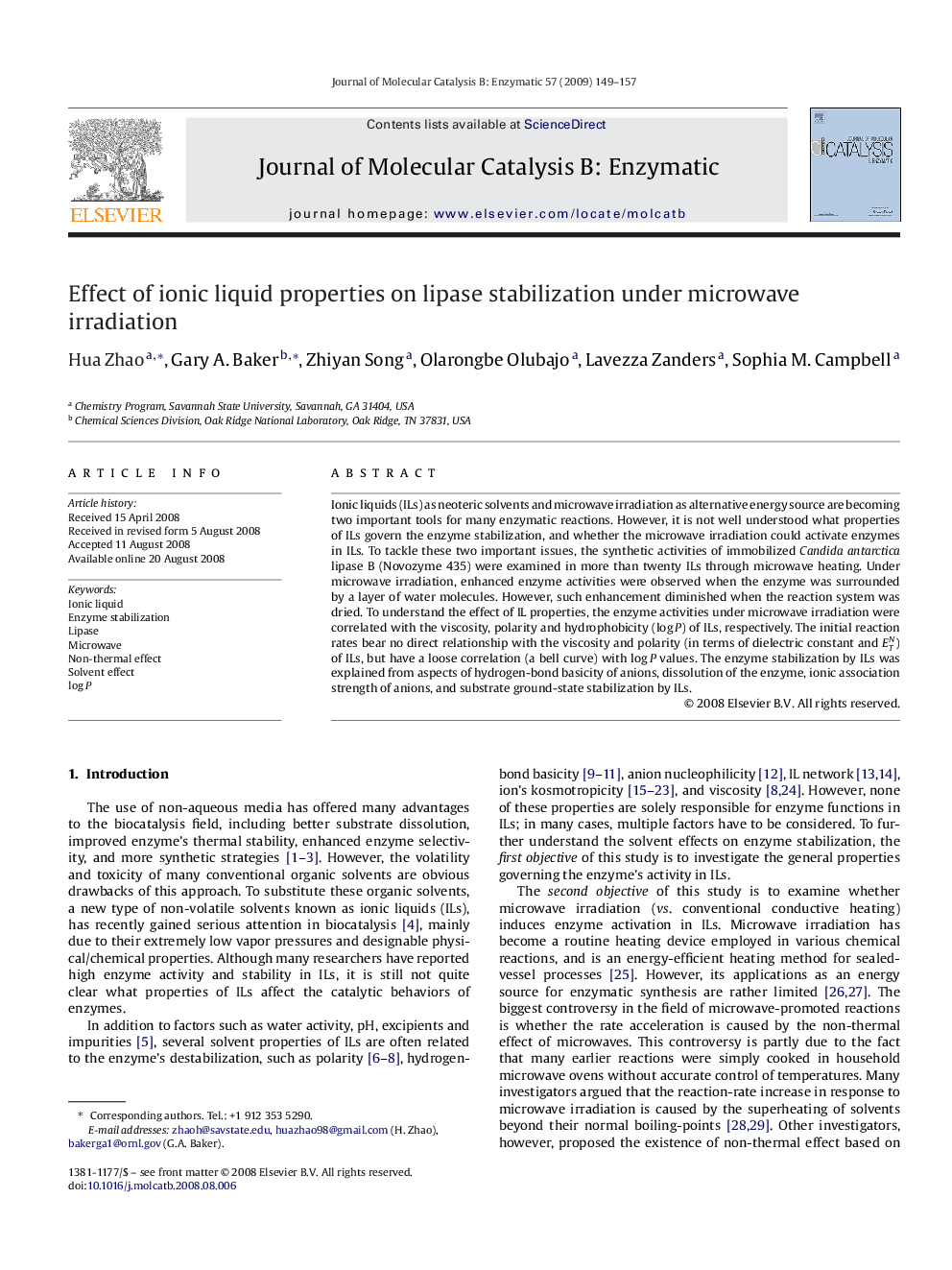| Article ID | Journal | Published Year | Pages | File Type |
|---|---|---|---|---|
| 70589 | Journal of Molecular Catalysis B: Enzymatic | 2009 | 9 Pages |
Ionic liquids (ILs) as neoteric solvents and microwave irradiation as alternative energy source are becoming two important tools for many enzymatic reactions. However, it is not well understood what properties of ILs govern the enzyme stabilization, and whether the microwave irradiation could activate enzymes in ILs. To tackle these two important issues, the synthetic activities of immobilized Candida antarctica lipase B (Novozyme 435) were examined in more than twenty ILs through microwave heating. Under microwave irradiation, enhanced enzyme activities were observed when the enzyme was surrounded by a layer of water molecules. However, such enhancement diminished when the reaction system was dried. To understand the effect of IL properties, the enzyme activities under microwave irradiation were correlated with the viscosity, polarity and hydrophobicity (log P ) of ILs, respectively. The initial reaction rates bear no direct relationship with the viscosity and polarity (in terms of dielectric constant and ETN) of ILs, but have a loose correlation (a bell curve) with log P values. The enzyme stabilization by ILs was explained from aspects of hydrogen-bond basicity of anions, dissolution of the enzyme, ionic association strength of anions, and substrate ground-state stabilization by ILs.
